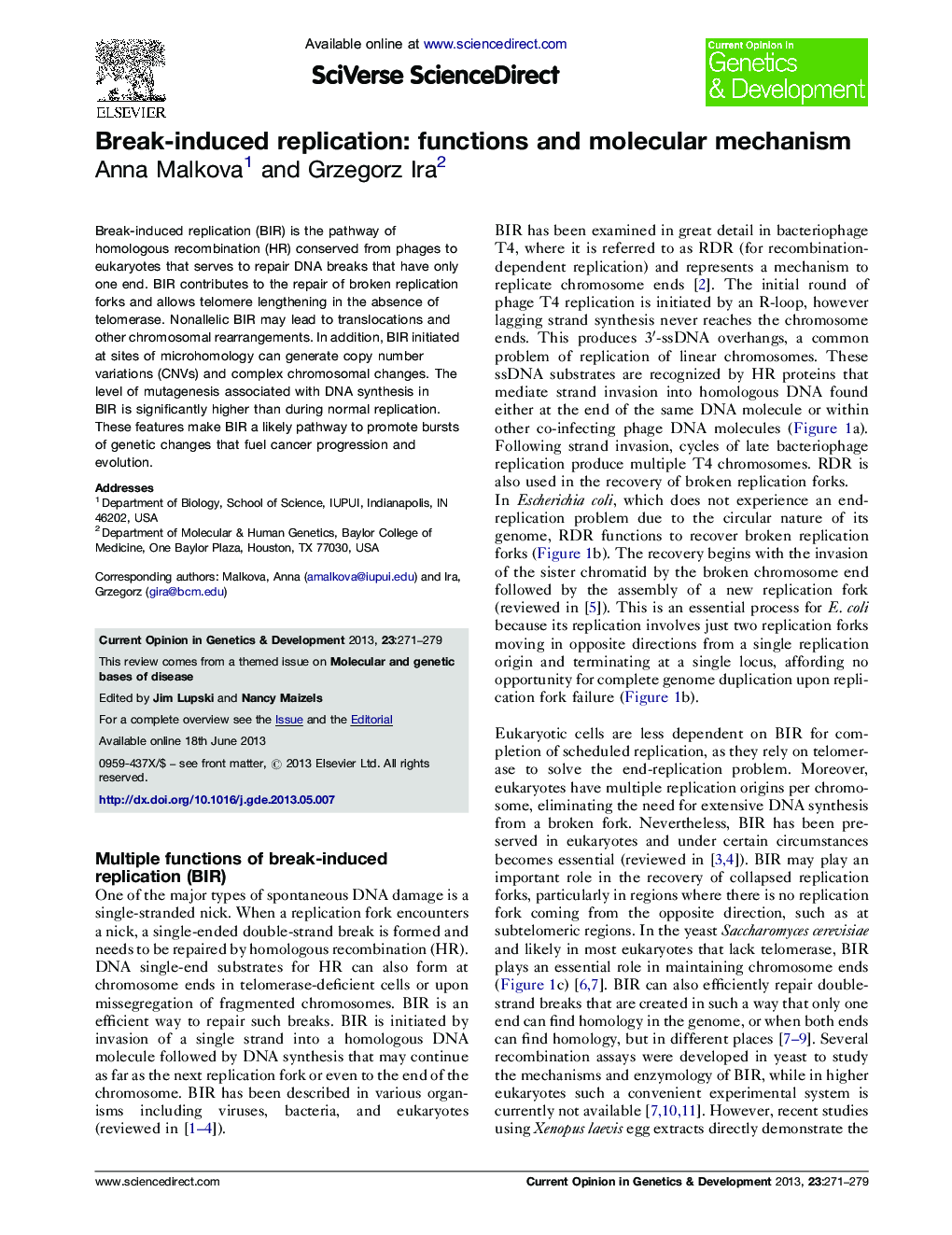| Article ID | Journal | Published Year | Pages | File Type |
|---|---|---|---|---|
| 5893704 | Current Opinion in Genetics & Development | 2013 | 9 Pages |
Abstract
Break-induced replication (BIR) is the pathway of homologous recombination (HR) conserved from phages to eukaryotes that serves to repair DNA breaks that have only one end. BIR contributes to the repair of broken replication forks and allows telomere lengthening in the absence of telomerase. Nonallelic BIR may lead to translocations and other chromosomal rearrangements. In addition, BIR initiated at sites of microhomology can generate copy number variations (CNVs) and complex chromosomal changes. The level of mutagenesis associated with DNA synthesis in BIR is significantly higher than during normal replication. These features make BIR a likely pathway to promote bursts of genetic changes that fuel cancer progression and evolution.
Related Topics
Life Sciences
Biochemistry, Genetics and Molecular Biology
Developmental Biology
Authors
Anna Malkova, Grzegorz Ira,
